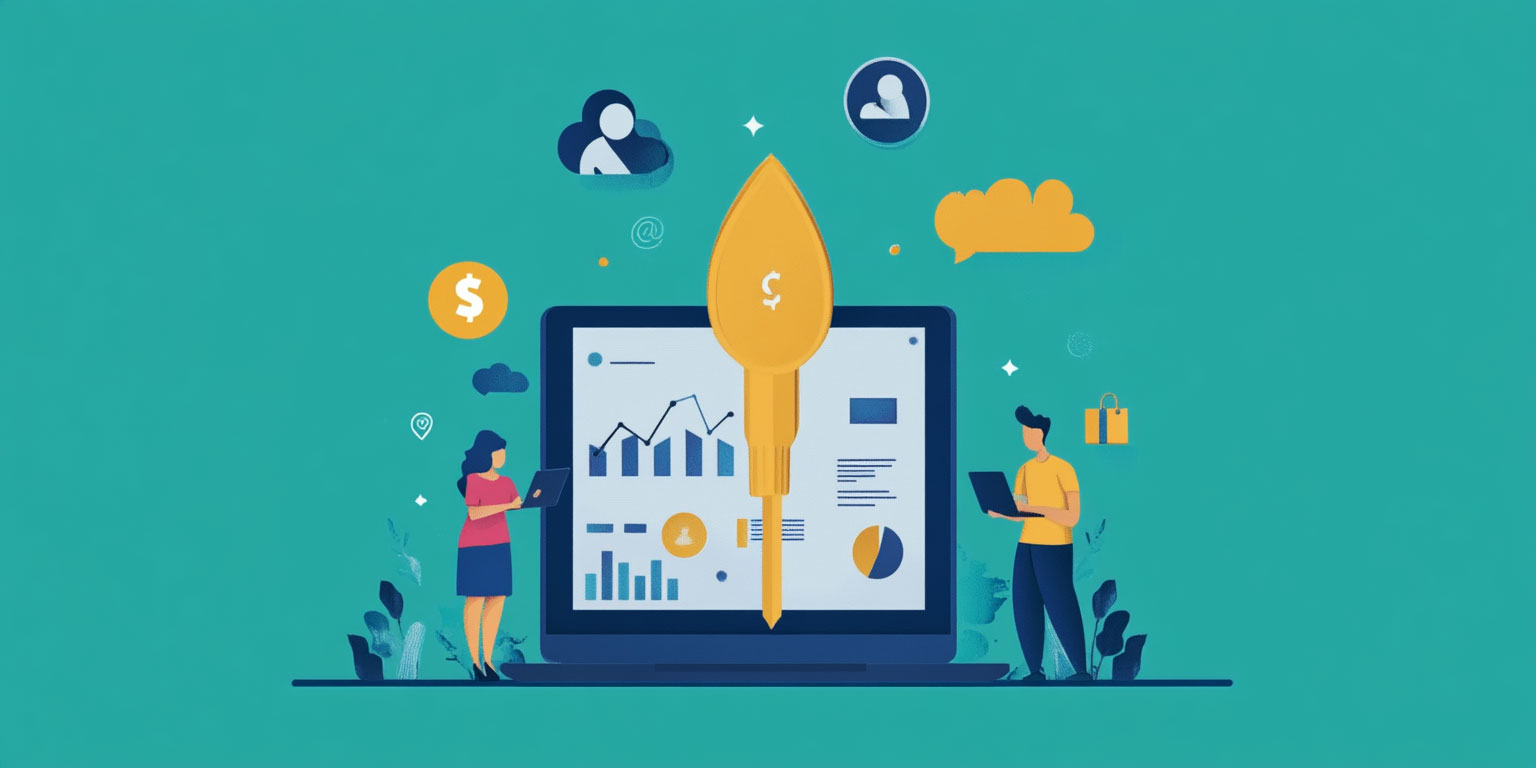In the fast-paced world of startups, where competition is fierce and resources are often limited, the ability to retain customers can make or break a business. While much of the focus tends to be on customer acquisition, especially during the early stages of growth, customer retention is the true driver of long-term success. This article delves deep into the role of customer retention in startup growth, providing a comprehensive guide on strategies, challenges, and the impact of retention on the overall success of a startup.
Understanding Customer Retention
Customer retention refers to the ability of a business to keep its customers over time. In other words, it’s the process of ensuring that customers continue to do business with you, rather than turning to competitors. For startups, which often operate with limited budgets and resources, customer retention is critical. Retaining existing customers is significantly more cost-effective than acquiring new ones, making it a crucial element in driving sustainable growth.
The Importance of Customer Retention
Customer retention is not just a metric; it’s a reflection of the health of your business. A high retention rate indicates that your customers are satisfied with your products or services, while a low retention rate suggests the opposite. For startups, customer retention is particularly important for several reasons:
- Cost-Effectiveness: Acquiring new customers can cost five to 25 times more than retaining existing ones. For startups with limited marketing budgets, focusing on retention can lead to significant cost savings.
- Revenue Stability: Retained customers are more likely to make repeat purchases, providing a steady stream of revenue that can help stabilize cash flow.
- Customer Lifetime Value (CLV): Retained customers have a higher lifetime value, meaning they are worth more to your business over time. This is because they are more likely to make repeat purchases and refer others to your business.
Retention vs. Acquisition: A Balanced Approach
While customer acquisition is essential for growth, especially in the early stages of a startup, an overemphasis on acquisition can lead to neglecting existing customers. A balanced approach that combines both acquisition and retention strategies is key to sustainable growth. By retaining customers, startups can build a loyal customer base that not only drives revenue but also serves as a foundation for future growth.
The Impact of Customer Retention on Startup Growth
Customer retention has a direct and significant impact on the growth of a startup. It influences various aspects of the business, from revenue generation to brand reputation, and plays a critical role in achieving long-term success.
Revenue Stability
One of the most immediate benefits of customer retention is revenue stability. Retained customers are more likely to make repeat purchases, providing a steady stream of income. This is particularly important for startups, which may experience fluctuations in revenue due to market conditions, competition, or changes in consumer behavior. By focusing on retention, startups can build a more predictable and stable revenue stream, which is essential for long-term growth.
Enhancing Customer Lifetime Value (CLV)
Customer Lifetime Value (CLV) is a key metric for startups, as it measures the total revenue a customer is expected to generate over the course of their relationship with the business. Retained customers typically have a higher CLV because they make more purchases over time and are more likely to engage with upsell or cross-sell opportunities. By increasing CLV, startups can maximize the value of each customer, leading to higher profitability and growth.
Leveraging Word-of-Mouth Marketing
Satisfied customers are more likely to recommend your products or services to others, creating a powerful word-of-mouth marketing effect. This is especially valuable for startups, which may have limited marketing budgets. Retained customers can become brand advocates, helping to spread the word about your business and attracting new customers at no additional cost.
Reducing Churn for Sustainable Growth
Customer churn, or the rate at which customers stop doing business with you, can be a major obstacle to growth. High churn rates can erode your customer base, making it difficult to achieve long-term success. By focusing on retention, startups can reduce churn and maintain a stable and growing customer base, which is essential for sustainable growth.
Strategies for Improving Customer Retention
Improving customer retention requires a strategic approach that focuses on building strong relationships with customers and continuously delivering value. Below are some key strategies that startups can use to enhance retention and drive growth.
Personalized Customer Experience
In today’s competitive marketplace, customers expect personalized experiences that cater to their unique needs and preferences. Personalization can take many forms, from tailored product recommendations to customized marketing messages. By leveraging data and analytics, startups can gain insights into customer behavior and preferences, allowing them to create more personalized experiences that resonate with their audience.
Key Tactics for Personalization:
- Segment Your Audience: Divide your customers into segments based on demographics, behavior, and preferences to deliver more targeted and relevant content.
- Use Personalized Communication: Send personalized emails, offers, and messages that address customers by name and reflect their past interactions with your brand.
- Implement Dynamic Content: Use dynamic content on your website or app that changes based on the user’s behavior or preferences.
Loyalty Programs and Incentives
Loyalty programs are a proven way to enhance customer retention by rewarding customers for their continued business. These programs can take many forms, from points-based systems to tiered rewards and exclusive offers. The key is to create a program that aligns with your customers’ preferences and incentivizes them to stay engaged with your brand.
Key Elements of a Successful Loyalty Program:
- Simple and Transparent: Ensure that the program is easy to understand and participate in. Complexity can deter customers from engaging with the program.
- Valuable Rewards: Offer rewards that are meaningful and valuable to your customers. This could include discounts, free products, or exclusive access to events or content.
- Regular Engagement: Keep customers engaged with the program by regularly offering new rewards, challenges, or promotions.
Customer Feedback and Adaptation
Listening to your customers and adapting based on their feedback is crucial for retention. Customers want to feel heard and valued, and incorporating their feedback into your products, services, or processes can help build trust and loyalty.
Steps for Effective Feedback Management:
- Solicit Feedback Regularly: Use surveys, polls, or direct communication to gather feedback from customers on a regular basis.
- Act on Feedback: Show customers that you value their input by making changes based on their feedback. Communicate these changes to customers to reinforce that their voices matter.
- Close the Loop: Follow up with customers after implementing changes to ensure that they are satisfied with the results.
Quality Customer Service
Exceptional customer service is a cornerstone of customer retention. In many cases, the way you handle customer issues can make the difference between retaining a customer and losing them to a competitor. Startups should prioritize providing high-quality customer service that resolves issues quickly and effectively.
Best Practices for Quality Customer Service:
- Be Responsive: Ensure that customer inquiries and issues are addressed promptly. Long wait times can lead to frustration and dissatisfaction.
- Empower Your Team: Provide your customer service team with the tools and authority they need to resolve issues on the spot, without requiring multiple escalations.
- Focus on Empathy: Train your team to approach customer interactions with empathy and understanding. A little empathy can go a long way in building customer loyalty.
Measuring Customer Retention
Measuring customer retention is critical to understanding the effectiveness of your retention strategies and identifying areas for improvement. Several key metrics can help startups assess their retention efforts and make data-driven decisions.
Key Retention Metrics
Understanding and tracking key retention metrics is essential for gauging the health of your business and the success of your retention strategies.
Essential Metrics to Track:
- Retention Rate: The percentage of customers who continue to do business with you over a specific period. This metric provides a clear picture of how well you are retaining customers.
- Churn Rate: The percentage of customers who stop doing business with you during a given period. A high churn rate can indicate underlying issues with your product, service, or customer experience.
- Customer Satisfaction Score (CSAT): A measure of how satisfied customers are with your product or service. High satisfaction scores are often correlated with higher retention rates.
- Net Promoter Score (NPS): A metric that gauges customer loyalty by asking customers how likely they are to recommend your business to others. A high NPS indicates strong customer loyalty and can predict future retention.
Tools and Software for Measuring Retention
There are several tools and software platforms available that can help startups measure and analyze customer retention metrics. These tools provide valuable insights into customer behavior, allowing you to refine your retention strategies.
Popular Tools for Retention Analysis:
- Customer Relationship Management (CRM) Systems: Platforms like Salesforce or HubSpot can help track customer interactions and retention metrics.
- Customer Feedback Tools: Tools like SurveyMonkey or Qualtrics allow you to gather and analyze customer feedback, providing insights into satisfaction and retention.
- Analytics Platforms: Google Analytics and other web analytics tools can help you track user behavior on your website or app, identifying patterns that may impact retention.
Case Studies: Successful Retention Strategies
Examining real-world examples of successful retention strategies can provide valuable insights and inspiration for your own efforts. Below are a few case studies of startups that have successfully implemented retention strategies to drive growth.
Case Study 1: SaaS Startup:
- A SaaS startup implemented a customer feedback loop that allowed them to continuously improve their product based on user input. By regularly soliciting feedback and acting on it, they were able to reduce churn by 20% within six months.
Case Study 2: E-commerce Platform:
- An e-commerce platform introduced a tiered loyalty program that rewarded customers for repeat purchases. The program was simple, transparent, and offered valuable rewards, resulting in a 15% increase in repeat customers within the first year.
Case Study 3: Subscription Service:
- A subscription-based startup focused on improving their customer service by implementing a 24/7 support chat and empowering their support team to resolve issues quickly. This led to a 10% increase in customer satisfaction scores and a significant reduction in churn.
Challenges in Customer Retention for Startups
While customer retention is critical for growth, it’s not without its challenges. Startups, in particular, face unique obstacles when it comes to retaining customers. Understanding these challenges can help you develop strategies to overcome them.
Competition in a Crowded Market
Startups often operate in highly competitive markets where customers have numerous options to choose from. This can make it difficult to stand out and retain customers, especially if competitors offer similar products or services at lower prices.
Strategies to Overcome Competition:
- Differentiate Your Brand: Focus on what makes your brand unique and communicate this clearly to your customers. Whether it’s superior quality, exceptional service, or innovative features, differentiation is key to retention.
- Build Strong Relationships: Foster strong relationships with your customers through personalized experiences, exceptional service, and regular engagement. A strong relationship can make customers less likely to switch to a competitor.
- Focus on Niche Markets: If possible, target a specific niche market where you can build expertise and a loyal customer base. This can help reduce competition and improve retention.
Resource Constraints
Startups often operate with limited resources, which can make it challenging to invest in customer retention strategies. Whether it’s a lack of budget, personnel, or technology, resource constraints can hinder your ability to implement effective retention programs.
Strategies to Address Resource Constraints:
- Prioritize High-Impact Activities: Focus your limited resources on activities that will have the greatest impact on retention. This might include improving customer service, enhancing product quality, or launching a loyalty program.
- Leverage Technology: Use affordable technology solutions to automate and streamline retention efforts. For example, email marketing platforms can help you maintain regular communication with customers at a low cost.
- Partner with Other Startups: Consider partnering with other startups or businesses that complement your offerings. Joint promotions or loyalty programs can help you pool resources and reach a larger audience.
Evolving Customer Expectations
Customer expectations are constantly evolving, and startups must keep pace with these changes to retain customers. Whether it’s a demand for faster delivery, more personalized experiences, or better customer service, failing to meet customer expectations can lead to churn.
Strategies to Meet Evolving Expectations:
- Stay Informed: Keep a close eye on industry trends and customer behavior to anticipate changes in expectations. Regularly soliciting customer feedback can also provide insights into what your customers want.
- Adapt Quickly: Be agile and responsive to changes in customer expectations. This might mean launching new features, improving service, or offering new products that align with customer needs.
- Innovate Continuously: Innovation is key to staying ahead of customer expectations. Regularly evaluate your offerings and look for opportunities to improve or innovate based on customer feedback and market trends.
Best Practices for Startup Customer Retention
Achieving high customer retention requires a combination of strategies, best practices, and a commitment to continuous improvement. Below are some best practices that can help startups retain customers and drive long-term growth.
Building a Customer-Centric Culture
A customer-centric culture is one where every aspect of the business is focused on delivering value to the customer. This culture should be ingrained in every team member, from the CEO to front-line employees. When customers are at the heart of your business, retention naturally follows.
Steps to Build a Customer-Centric Culture:
- Lead by Example: Leadership should model customer-centric behavior by regularly engaging with customers, listening to their needs, and making decisions that prioritize customer value.
- Empower Employees: Give employees the tools, training, and authority they need to deliver exceptional customer experiences. Encourage them to take ownership of customer satisfaction.
- Align Goals with Customer Success: Ensure that company goals, KPIs, and incentives are aligned with customer success. This might include measuring and rewarding retention, satisfaction, and loyalty.
Continuous Engagement with Customers
Maintaining ongoing communication and engagement with customers is critical for retention. Regular engagement helps keep your brand top of mind and provides opportunities to strengthen relationships and gather feedback.
Best Practices for Continuous Engagement:
- Regular Communication: Use email marketing, social media, and other channels to stay in touch with customers. Share updates, promotions, and valuable content that keeps them engaged with your brand.
- Personalized Interactions: Tailor your communication to each customer’s preferences and behavior. Personalized interactions are more likely to resonate with customers and strengthen their loyalty.
- Exclusive Content and Offers: Provide customers with exclusive content, offers, or experiences that make them feel valued. This could include early access to new products, special discounts, or VIP events.
Retention-Based Business Models
Some startups build their business models around retention from the outset. These models prioritize long-term relationships with customers and focus on delivering continuous value over time.
Examples of Retention-Based Models:
- Subscription Services: Subscription-based startups, such as those in the SaaS or e-commerce space, naturally focus on retention as customers pay on a recurring basis. The key is to continually deliver value that justifies the subscription fee.
- Membership Programs: Membership-based models, where customers pay for access to exclusive products, services, or content, rely on retention to drive profitability. Offering ongoing value and perks can help retain members over time.
- Service Contracts: Businesses that offer long-term service contracts, such as those in the professional services or B2B space, focus on building strong relationships and delivering consistent value to retain clients.
Conclusion
Customer retention is a critical driver of startup growth, offering numerous benefits, from revenue stability to increased customer lifetime value and word-of-mouth marketing. For startups, prioritizing retention over acquisition can lead to more sustainable and profitable growth. By implementing strategies such as personalized customer experiences, loyalty programs, quality customer service, and continuous engagement, startups can build a loyal customer base that supports long-term success.
Understanding and measuring key retention metrics, overcoming challenges such as competition and resource constraints, and adopting best practices for customer-centric culture and continuous engagement are essential steps in improving retention. As startups navigate the complexities of the market, focusing on customer retention will not only help them survive but thrive in the competitive landscape.
Call to Action
For startups looking to enhance their customer retention strategies, it’s crucial to start by analyzing your current retention metrics and identifying areas for improvement. Consider implementing some of the strategies discussed in this article to build stronger relationships with your customers and drive sustainable growth.




